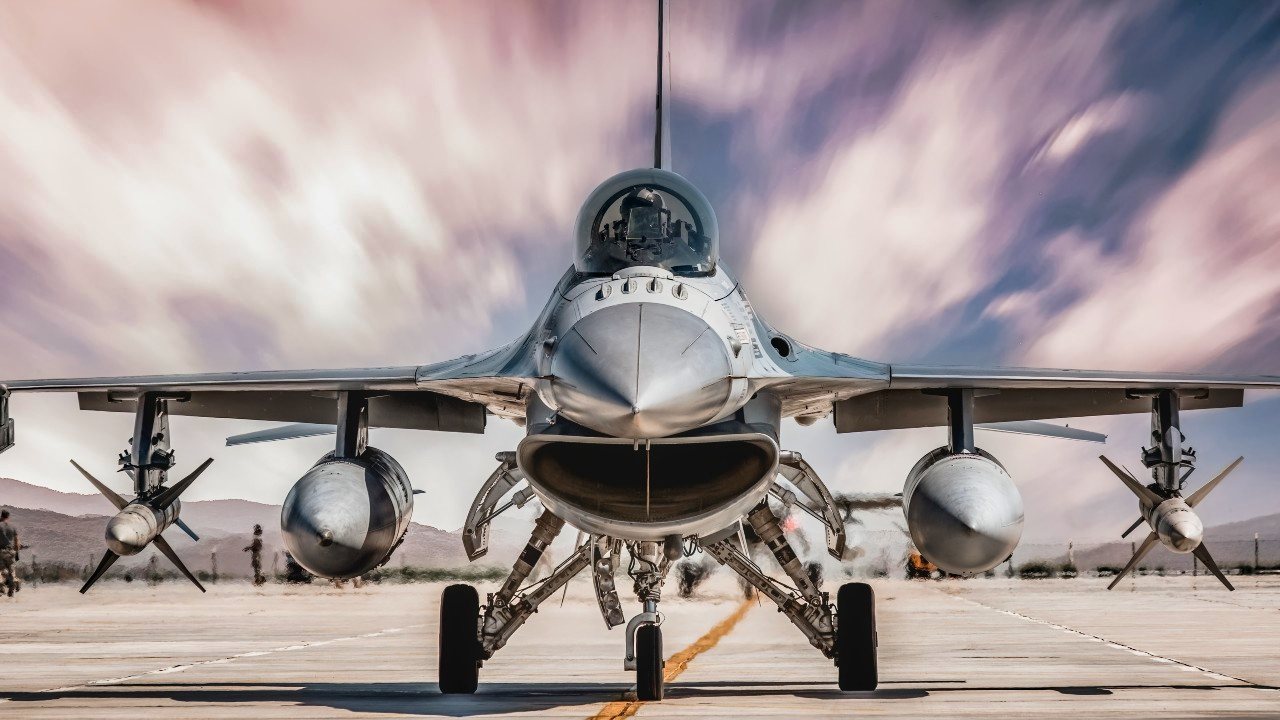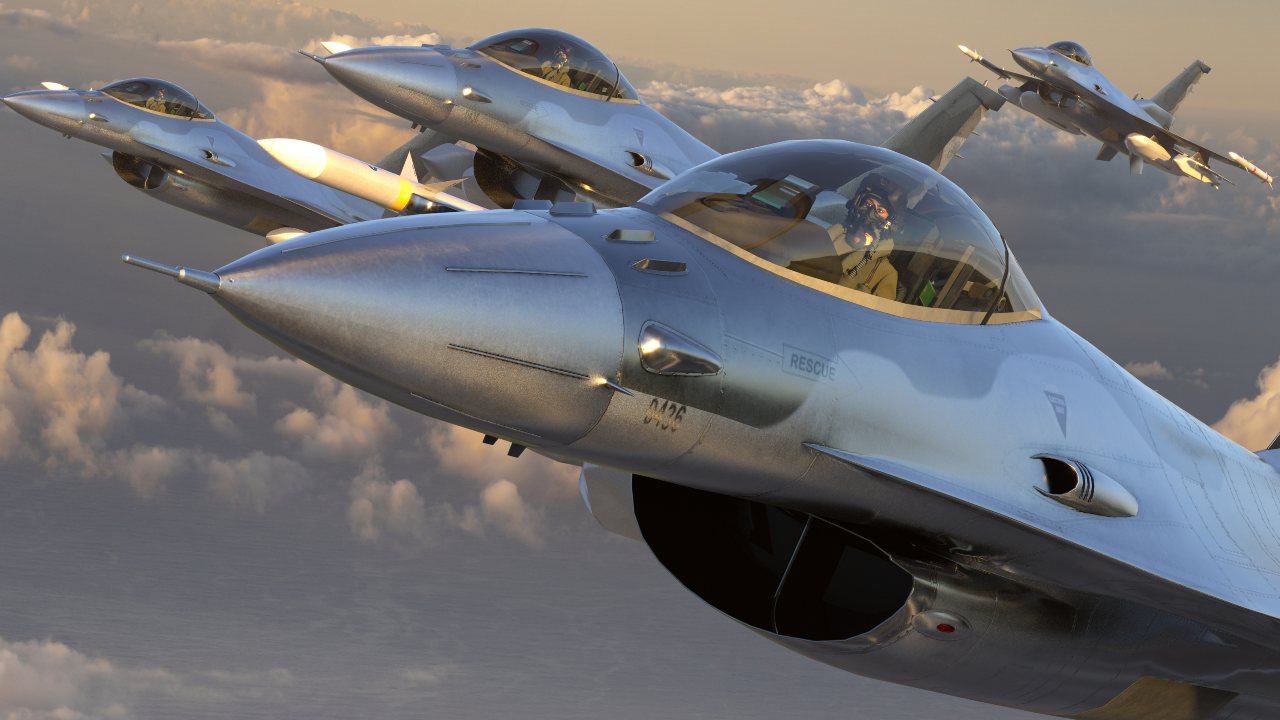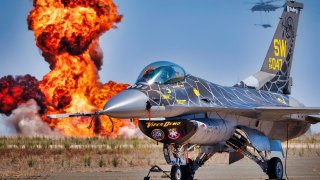AI Top Gun?: Autonomous F-16 Just Took Part in a Dogfight With Manned Fighter
In the recently disclosed flights, the ACE AI algorithms took control of a specially modified F-16 Fighting Falcon test aircraft designated as the X-62A, or VISTA (Variable In-flight Simulator Test Aircraft), at the Air Force Test Pilot School at Edwards Air Force Base (AFB), California. The demonstrations of autonomous combat maneuvers began last year.
Hollywood might have the plot for Top Gun 3 – it would see Pete "Maverick" Mitchell flying against an autonomous aircraft to show that even a slightly over-the-hill human aviator can best a machine. This isn't really all that farfetched, however, as the Defense Advanced Research Projects Agency (DARPA) announced this week that its Air Combat Evolution (ACE) program achieved the first-ever in-air tests of AI algorithms autonomously flying an F-16 Fighting Falcon against a human-piloted F-16 in within-visual-range combat scenarios – what we like to describe as "dogfighting."
In the recently disclosed flights, the ACE AI algorithms took control of a specially modified F-16 Fighting Falcon test aircraft designated as the X-62A, or VISTA (Variable In-flight Simulator Test Aircraft), at the Air Force Test Pilot School at Edwards Air Force Base (AFB), California. The demonstrations of autonomous combat maneuvers began last year.
DARPA further released a video of its team members discussing what makes the ACE program unlike other aerospace autonomy projects. The team further offers insight into how the program represents a transformational moment in aerospace history, establishing a foundation for ethical, trusted, human-machine teaming for complex military and civilian applications.
Man vs. Machine – The ACE Program
According to DARPA, the goal of the ACE program is to increase trust in combat autonomy by using human-machine collaborative dogfighting as its challenge problem, while it also serves as an entry point into complex human-machine collaboration.
"ACE will apply existing artificial intelligence technologies to the dogfight problem in experiments of increasing realism," DARPA explained. "In parallel, ACE will implement methods to measure, calibrate, increase, and predict human trust in combat autonomy performance. Finally, the program will scale the tactical application of autonomous dogfighting to more complex, heterogeneous, multi-aircraft, operational-level simulated scenarios informed by live data, laying the groundwork for future live, campaign-level Mosaic Warfare experimentation."
From the sound of it, ACE could contribute greatly to the United States Air Force's Next Generation Air Dominance (NGAD) program, which seeks to develop a "system of systems," including a manned sixth-generation fighter supported by autonomous platforms including unmanned aerial systems (UAS).
As DARPA noted, in a future air domain contested by adversaries, a single human pilot could greatly increase lethality by effectively orchestrating multiple autonomous unmanned platforms from within a manned aircraft. That would shift human role from single platform operator to mission commander, where the UAS would act as "loyal wingmen" supporting the manned fighter aircraft.
"In particular, ACE aims to deliver a capability that enables a pilot to attend to a broader, more global air command mission while their aircraft and teamed unmanned systems are engaged in individual tactics," DARPA added.
The human operator would still make the big decisions, such as developing an overall engagement strategy, selecting and prioritizing targets, and determining the best weapon or effect, while lower-level functions (i.e., details of aircraft maneuver and engagement tactics) could be left to the autonomous system.
According to DARPA, the technology development of the ACE program addresses four primary challenges:
*Increase air combat autonomy performance in local behaviors (individual aircraft and team tactical)
*Build and calibrate trust in air combat local behaviors
*Scale performance and trust to global behaviors (heterogeneous multi-aircraft)
*Build infrastructure for full-scale air combat experimentation
Tests Underway
The Department of Defense (DoD) has said that a total of 21 test flights were conducted for the project between December 2022 and September 2023. These built on the "AlphaDogFight" trials, a three-day virtual competition that took place in 2020 – and which saw Heron Systems' F-16 AI agent taking on experienced human Air Force F-16 pilots. The AI came out as the top dog, "winning 5-0 through aggressive and precise maneuvers the human pilot couldn't match."
It could be argued the simulation was just a very advanced video game, but now the focus has shifted to actual aircraft in a real-world environment.
Since its inception in 2019, the ACE program has rapidly reached several key milestones, marking a significant departure from the usual lengthy timelines associated with developing advanced aerospace platforms, TheDebrief reported.

"Beginning in December of 2022, that was the first application of machine learning agents to control the flight path of fighter aircraft," explained Col. James Valpiana, commandant of the Air Force Test Pilot School, in the video accompanying the update.
The X-62A has gone from simply flying to taking on the role the F-16 Fighting Falcon was meant to do, as in be a fighter aircraft. Human pilots were onboard the autonomous aircraft during each test to take control if necessary.
Secretary of the Air Force Frank Kendall – who recently took a flight in an autonomously-controlled F-16 – called the capability "transformational," and in the DARPA video added, "The X-62A team demonstrated that cutting-edge machine learning based autonomy could be safely used to fly dynamic combat maneuvers. The team accomplished this while complying with American norms for safe and ethical use of autonomous technology."

It is unclear if the AI-controlled X-62A actually beat the human pilots in the recent dogfighting encounters in the sky, but it does appear that we may be getting much closer to an AI loyal wingman. Whether they can sing like the wingmen in Top Gun isn't clear, but we know AI is also making music – so anything is possible
Author Experience and Expertise: Peter Suciu
Peter Suciu is a Michigan-based writer. He has contributed to more than four dozen magazines, newspapers, and websites with over 3,200 published pieces over a twenty-year career in journalism. He regularly writes about military hardware, firearms history, cybersecurity, politics, and international affairs. Peter is also a Contributing Writer for Forbes and Clearance Jobs. You can follow him on Twitter: @PeterSuciu.
You can email the author: [email protected].
Image Credit: Shutterstock.


